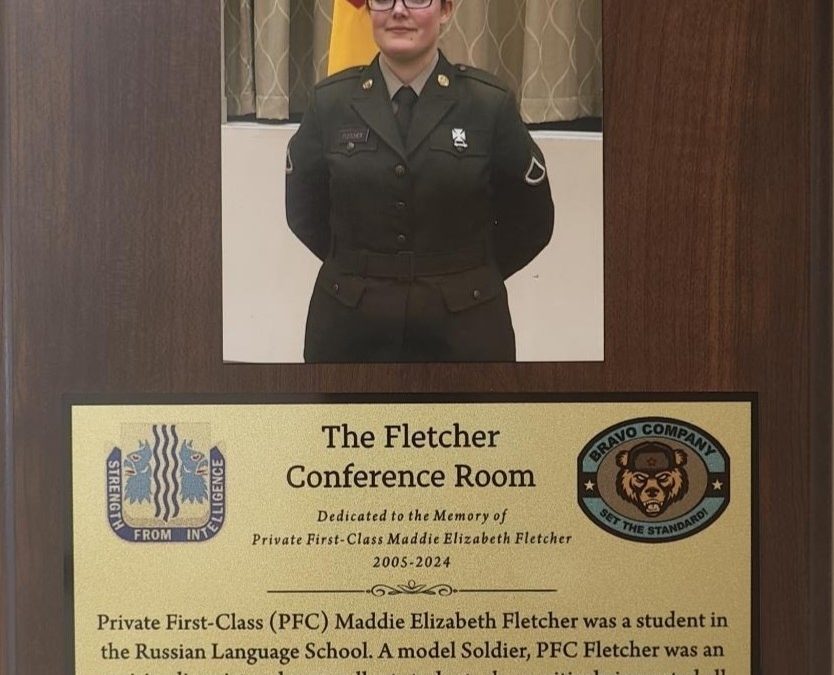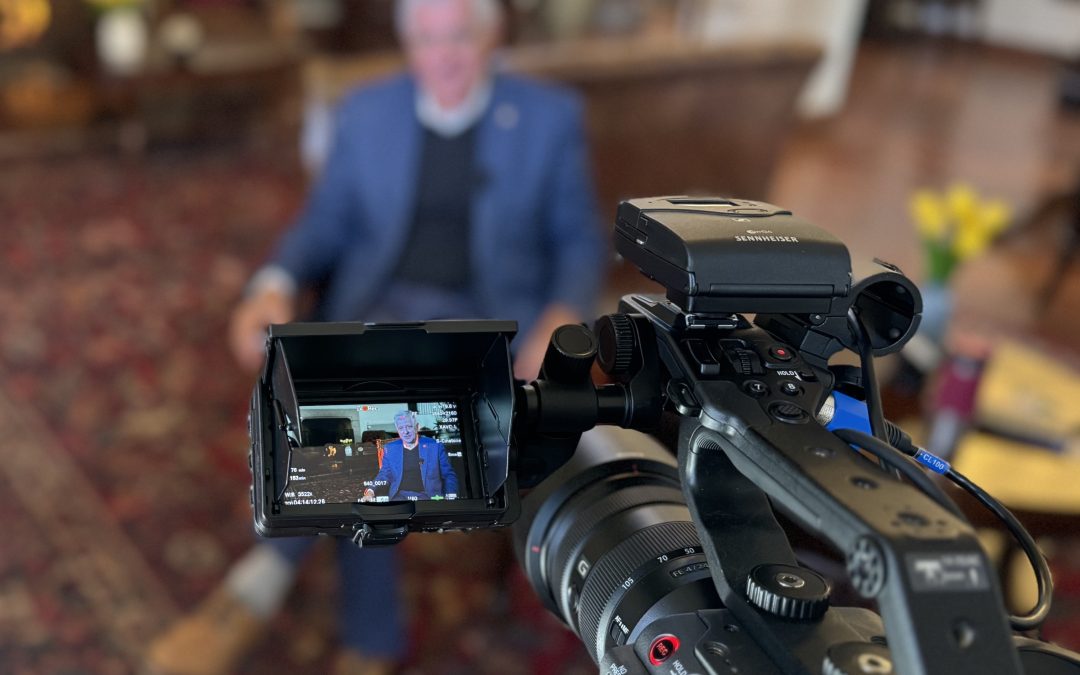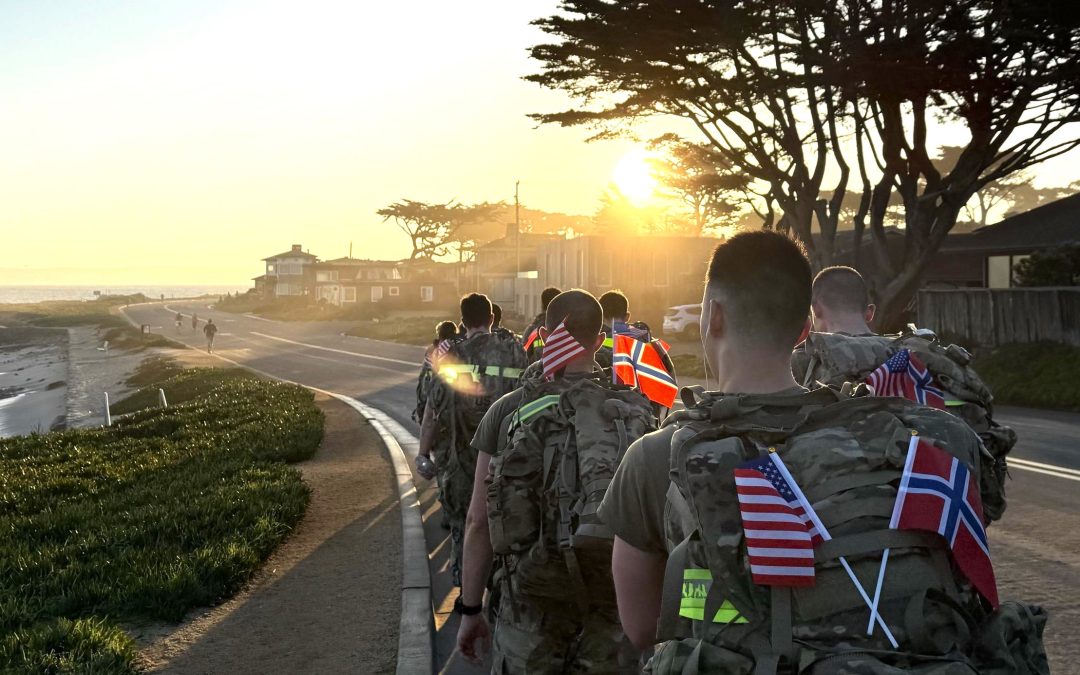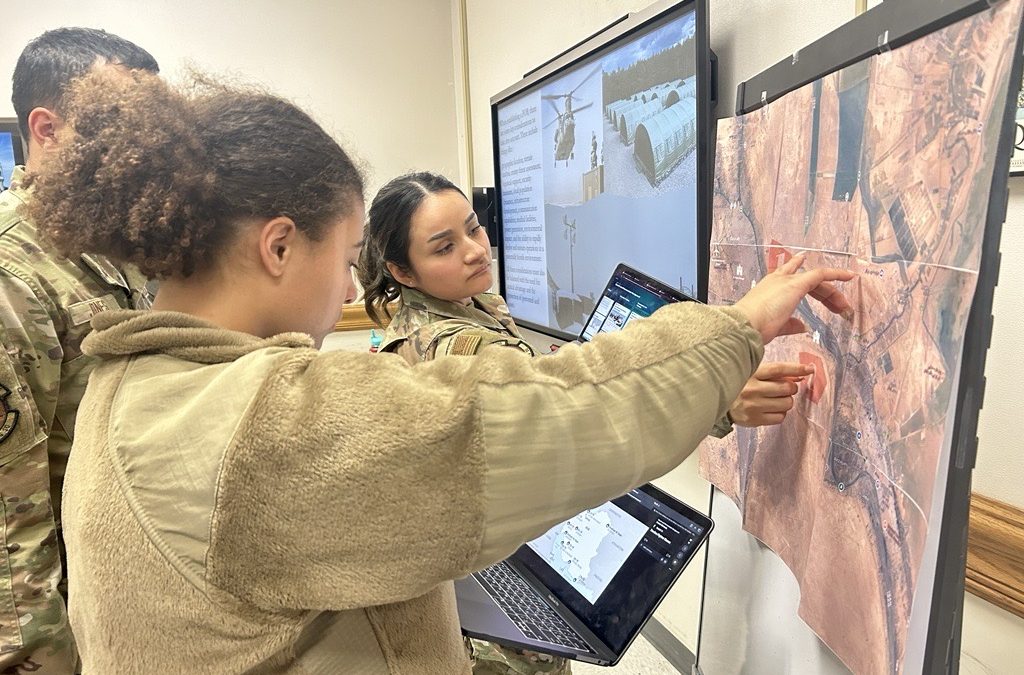By Patrick Bray
DLIFLC Public Affairs
Editor’s note: This article is a feature from the Foreign Area Officer program’s monthly officer professional development series at DLIFLC.

Dr. Sharad Joshi, an assistant professor of nonproliferation and terrorism studies at the Middlebury Institute of International Studies in Monterey, spoke to Foreign Area Officers in language training at the Defense Language Institute Foreign Language Center Sept. 14 about relations between India and Pakistan in his presentation “Assessing the India-Pakistan Dyad.” (Photo by Patrick Bray, DLIFLC Public Affairs)
MONTEREY, Calif. – Dr. Sharad Joshi, an assistant professor of nonproliferation and terrorism studies at the Middlebury Institute of International Studies in Monterey, spoke to Foreign Area Officers in language training at the Defense Language Institute Foreign Language Center Sept. 14 about relations between India and Pakistan.
In his presentation “Assessing the India-Pakistan Dyad,” Joshi spoke about why this issue is important within U.S. National Security Strategy. The U.S. identifies a plethora of problems in Asia as it continues its rebalance to Asia and the Pacific, according to the strategy. In South Asia, the U.S. works with both India and Pakistan to promote strategic stability, combat terrorism, and advance regional economic integration in South and Central Asia.
“In this partnership we always have to consider the other power,” said Joshi, referring to India and Pakistan as a hyphenated partnership. “For example, one cannot just go to Islamabad or just go to New Delhi without going to the other.”
The problem herein is that India and Pakistan have been at odds with each other since the British Partition of India of 1947, which created India and the Dominion of Pakistan, later splitting into Pakistan and Bangladesh. Since then, India and Pakistan fought wars with each other from 1947-1948, in 1965, and in 1999. Kashmir, the disputed northernmost province of India, is at the heart of the tensions between the two countries. The vastly-Muslim province has religious and cultural ties to Pakistan, but is geographically located in India.

Residents of a village near Balakot, Pakistan, wait as Pakistani soldiers unload disaster relief supplies from a U.S. Navy MH-53E Sea Dragon helicopter Oct. 15, 2005. The Department of Defense participated in the multinational effort to provide humanitarian assistance and support to Pakistan and parts of India and Afghanistan following a devastating earthquake. (U.S. Air Force photo by Tech. Sgt. Mike Buytas/Released)
Both states have developed nuclear weapons and want to be viewed as responsible nuclear states, but neither has signed the 1970 Nuclear Nonproliferation Treaty, which commits states with nuclear weapons to pursue disarmament, while states without nuclear weapons agree to forgo developing or acquiring weapons of their own.
India has signed a nuclear deal with the U.S. known as the U.S.-India Civil Nuclear Agreement in which India separated its civil and military nuclear facilities and placed all its civil nuclear facilities under International Atomic Energy Agency safeguards.
India and the U.S. are the world’s largest democracies, who share inherent values and mutual interests. This forms the cornerstone of cooperation in the areas of security, energy, and the environment. The U.S. supports India’s role as a regional provider of security and its expanded participation in critical regional institutions.
“India wants to be one of the decision makers regarded as one of the major world powers,” Joshi said about Indian foreign policy.
Pakistan’s foreign policy is reactive to India and has sponsored terrorism in the past with the intent to “bleed the Indian Army from within,” said Joshi.
South Asia is a hub of global jihadism and terrorism, according to Joshi. In November 2008 an Islamic militant organization based out of Pakistan conducted a series of attacks in Mumbai gaining the world’s attention.
Terrorists in the region have acquired their own financial structures and some have earned legitimacy, such as during the devastating 2005 Kashmir earthquake, when terrorist organizations, labeled such by India, conducted relief efforts amongst the population.
But frequent bilateral meetings do take place between India and Pakistan.

Dr. Sharad Joshi, an assistant professor of nonproliferation and terrorism studies at the Middlebury Institute of International Studies in Monterey, spoke to Foreign Area Officers in language training at the Defense Language Institute Foreign Language Center Sept. 14 about relations between India and Pakistan in his presentation “Assessing the India-Pakistan Dyad.” (Photo by Patrick Bray, DLIFLC Public Affairs)
“Every time there is a change of government in India there is the expectation that he or she is going to forge a new path with Pakistan,” said Joshi.
Joshi spoke as part of the FAO program’s monthly officer professional development speaker series, which is a critical part of FAO training at DLIFLC. The monthly program is an essential addition to the biannual Joint Foreign Area Officer Course Phase I, usually held in January and June.
FAOs, who come from the four branches of the U.S. military, are regionally focused and are considered experts on political-military issues. Once their FAO training is completed, they are expected to serve as defense attachés, security cooperation officers and political-military planners worldwide.
DLIFLC provides resident instruction in 23 languages at the Presidio of Monterey, California, with the capacity to instruct another 65 languages in Washington, D.C., graduating more than 220,000 linguists since 1941.
In addition, multiple language training detachments exists at sites in the U.S., Europe, Hawaii and Korea spanning all the U.S. geographic combatant commands in support of the total force.




